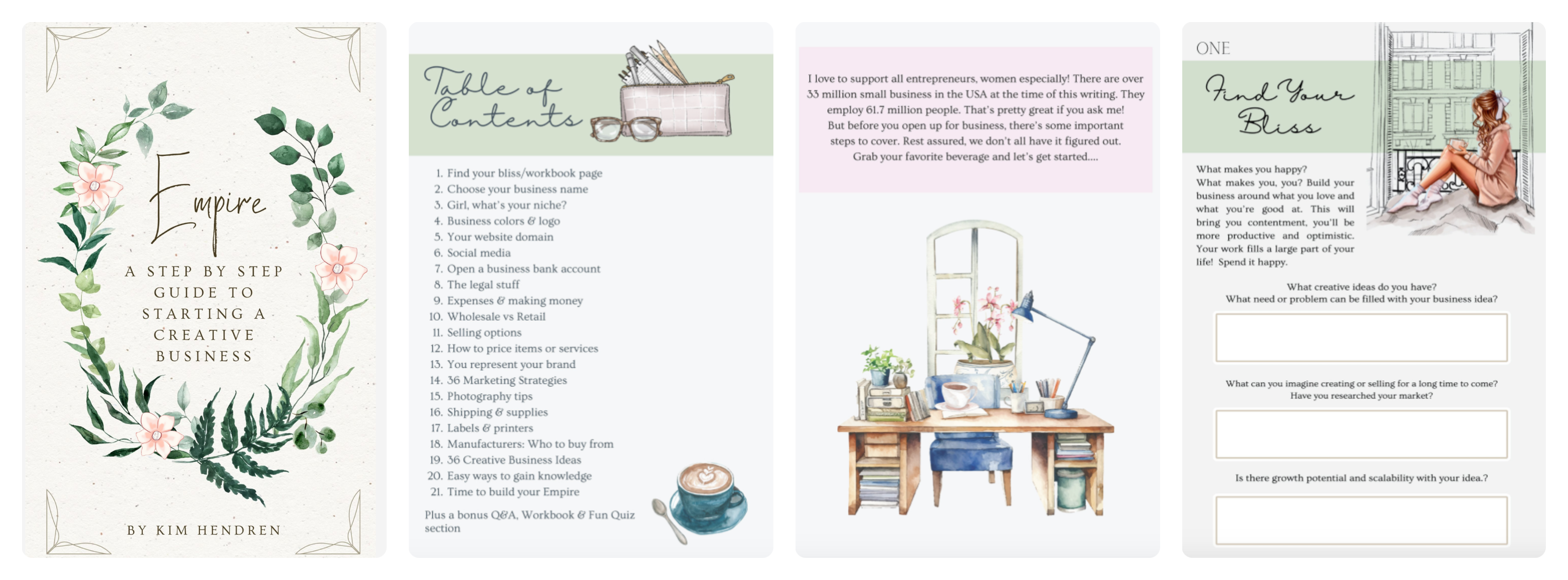Should your business worry about social media these days? In this post, we’ll explore the answer.
Social Media in 2024: Experts Weigh in on Its Crucial Role for Business Growth and Success
In an ever-evolving digital landscape, we sought the insights of founders and directors to determine if social media retains its critical role for business owners in 2024. From fostering brand growth to leveraging interactive trends, explore the varied perspectives of twelve experts on how social media continues to shape the business world.
- Fostering Brand Growth Through Social Media
- Enhancing Customer Service on Social Platforms
- Social Media Adapting to Consumer Trends
- Discovering a Powerful Hiring Tool
- Using Social Media as a Digital Window Display
- Tech Companies Thriving with Social Media
- Social Proof Boosting Credibility and Trust
- Establishing Authority Through Valuable Content
- Social Media’s Playing a Role in Business Strategy
- Micro-Communities Driving Targeted Engagement
- Quality Content Defining Social Media Success
- Interactive Social Media Trends Dominating
Fostering Brand Growth Through Social Media
In my journey with NOW Media and aiding over 100 brands to carve their unique identities in the market, I’ve witnessed the transformative power of social media in establishing and nurturing brand growth. Social media’s ability to foster real-time interactions and build authentic connections with audiences is unparalleled. A prime example of its utility comes from our strategic Instagram campaigns designed to amplify brand stories and values. We successfully elevated a startup’s brand visibility, leading to a 30% increase in their follower engagement within just a few months. This case highlighted not just the reach of social media but its impact on engagement and community building, key factors for brand loyalty and growth.
Through the lens of specific challenges like content creation and algorithm shifts noted in our experiences, it’s clear that navigating social media requires both creativity and adaptability. Yet, despite these hurdles, the channel’s value in brand development and marketing remains irrefutable. The agility of social media platforms allows for rapid response and strategy pivots, ensuring that content stays fresh and algorithm changes are accounted for. This dynamism is essential for keeping pace with the digital-first consumer landscape, making social media an indispensable tool for businesses in 2024.
From overseeing NOW Media’s diverse service offerings, including photography, email marketing, and digital advertising, it’s evident that integrating social media with other digital marketing strategies amplifies overall effectiveness.
For instance, coupling captivating brand photography with targeted social media distribution has consistently yielded higher engagement rates across campaigns. This symbiosis between content creation and social distribution underlines the central role social media plays in modern marketing ecosystems, illustrating its continuing importance for businesses aiming to make a mark in the digital age.
Nithin Koshy, Co-Founder, Now Media
Enhancing Customer Service on Social Platforms
In my role as the founder and president of Raincross, a leading digital marketing agency, I’ve witnessed the evolution and enduring significance of social media as a tool for business growth. Given the wealth of experience I’ve garnered in areas such as SEO, digital advertising, and social media marketing, I’m confident that social media remains a crucial tool for business owners in 2024. One concrete example that underscores this belief comes from our strategic approach to leveraging social media for tourism and hospitality clients.
We discovered that after enhancing our clients’ social media presence and emphasizing customer service through these platforms, our clients saw a remarkable increase in repeat business and positive feedback online. By encouraging satisfied customers to share their experiences and connect with the businesses on social media, we not only amplified our clients’ online visibility but also fostered a community of brand advocates. This strategy led to a tangible boost in engagement and, ultimately, conversion rates.
Furthermore, our approach toward collecting more emails through social media campaigns, rather than focusing solely on accumulating ‘likes,’ proved to be highly effective. By prioritizing email collection, we enabled direct and personalized communication with potential customers, resulting in a higher ROI compared to traditional social media engagement metrics. This strategic pivot highlighted the multifaceted value of social media not just as a platform for broadcasting content, but as a powerful tool for direct customer acquisition and retention.
These experiences clearly demonstrate the ongoing relevance of social media for businesses in 2024. While the digital landscape continually evolves, the fundamentals of connecting with and understanding your audience remain unchanged. Social media offers businesses unparalleled opportunities to engage directly with their target market, gain valuable insights, and adapt strategies in real-time to meet customer needs and preferences.
Kevin Watts, President & Founder, Raincross
Social Media Adapting to Consumer Trends
Technology is a fast-moving beast that we all try to keep up with as best we can, and one of the segments most deeply integrated with consumers is social media. The simple fact is, as long as it remains an important part of their life, it will remain an important part of business marketing and operations.
One of the things we can’t predict is what that looks like in the future. It seems obvious that social media will remain a core part of our lives for a long while yet, but as we see things develop like AI and the metaverse, how we interact with our consumers through these channels could rapidly change. It is very much an audience-led segment of marketing that businesses consistently have to evaluate and learn.
Nobody five years ago could have predicted that an app of dancing teenagers would become one of the biggest in the world, but lockdown happened, and TikTok became a suddenly important avenue for businesses to connect with consumers. Businesses have to keep on top of their social game because it’s where audiences are right now, so until they say otherwise, it will remain a vital part of any business plan.
Brett Downes, Founder, Haro Helpers
Discovering a Powerful Hiring Tool
Undeniably, yes! In my opinion, social media is a powerful tool for hiring. I’ve seen many examples where high-profile specialists were not receiving any suitable job offers from job search platforms, but merely sharing that they were open to a new career on their social media landed them a perfect job. The power of networking, as it is. Businesses bear many costs related to attracting talent and hiring.
A good CMO I know had to fill a challenging role—Head of Performance for an edtech startup. She had all key employees in the company post a job ad on their Facebook profiles, and this alone brought many promising candidates into the funnel. Another example related to hiring is when we turned down a candidate because we had seen some alarming behavior from them on social media. If they had shown excellent results on the test task and interview, we would have still considered them for the role. But poor results coupled with ‘red flags’ convinced us that they would be a bad fit for the company.
Daria Erina, Managing Director, Linked Helper
Using Social Media as a Digital Window Display
Social media is your visual merchandising, and it is essential to business growth and success. Just like a window in a store, social media is where people are likely to first see you, what might inspire people to browse, and ultimately, one of the first parts of the chain that leads to a new customer.
Window displays are the beating heart of a business because they can convert an unsuspecting person and an unidentified audience member into a loyal consumer. We are now in a world where online shopping is as much, if not more, important than physical space shopping, so your digital window display (your social media) can be vital to the success of your business. People want to look without the pressure to purchase, even though that is ultimately where they are being led, and social media is your digital window display that allows the consumer to do that.
Stefan Campbell, Owner, The Small Business Blog
Tech Companies Thriving with Social Media
It is still true in 2024 that tech companies need social media. Social media has helped businesses stay open and make changes during and after the pandemic.
As the market changes and technology develops rapidly, tech workers need to be easily found. Companies can communicate with potential customers immediately on social media, inform them about important events, and showcase their skills and experience. During the outbreak, businesses used social media to communicate, connect, and adapt, which was crucial when in-person meetings were difficult.
On Instagram, LinkedIn, and Twitter, tech companies shared important news, discussed industry trends, and hosted workshops and other online events. With real-time social media, businesses could quickly adapt to market changes. This allowed them to adjust swiftly.
Because social media is constantly evolving, it was simple to connect with clients, receive feedback, and form communities. The ability for interactive dialogue made it easier to improve products and services based on customer feedback.
Tech companies cannot operate without the powerful and accessible communication channels that social media provides. This is especially true during pandemics. In today’s fast-paced digital world, companies need to connect, educate, and engage people in order to thrive.
Bobby Lawson, Technology editor/publisher, Earth Web
Social Proof Boosting Credibility and Trust
I truly believe it’s still just as important as it was in 2022/23, if not more so. Why am I saying that? Well, in order to generate leads or secure new prospects, you should maintain an active social proof, especially in the current digital age when consumers are researching and analyzing brands before making a purchase or engaging with a business.
Having a strong social media presence can help build extra credibility and trust that otherwise would go to competitors who are more active online.
Tom Molnar, Creative Director, Fit Design
Establishing Authority Through Valuable Content
Absolutely. I’ve found that social media has not only been helpful in generating leads and sales, but its primary objective for my business has been in establishing credibility and authority. As I provide value for my clients by answering frequently asked questions, those posts become easy ramp-ups to a more engaged conversation with prospective clients.
Matthew Sanjari, Founder and Business Coach, PRIME Consulting
Social Media Playing a Role in Business Strategy
Yes, definitely. In fact, according to a report by Statista, the worldwide social media user base is expected to reach 4.41 billion by 2025. This staggering number clearly shows that social media will continue to play a significant role in business strategies.
Social media platforms like Facebook, Twitter, and Instagram have become powerful tools for businesses to connect with their target audience, build brand awareness, and drive sales. With the rise of influencer marketing and paid advertisements on these platforms, companies are able to reach a larger audience and increase their online presence.
Moreover, social media gives businesses valuable insights into customers’ preferences and behaviors. By analyzing data from platforms such as Facebook Insights or Twitter Analytics, companies can understand what content resonates with their audience, which products are in demand, and how they can improve their overall marketing strategies.
Tristan Harris, Demand Generation Senior Marketing Manager, Thrive Digital Marketing Agency
Micro-Communities Driving Targeted Engagement
Yes, social media will still be an essential tool for entrepreneurs in 2024, particularly when it comes to utilizing micro-communities. These are specialized user groups with a high level of engagement that are passionate about the same thing. Through the identification and engagement of these micro-communities, companies can reach a highly specific audience with a higher likelihood of conversion.
For instance, our business discovered a small group of passionate supporters of sustainable fashion. To appeal to this demographic, we produced content that highlighted our environmentally-friendly procedures and offerings. This strategy raised our brand awareness in this neighborhood and resulted in a notable rise in sales from this market group.
Engaging with micro-communities also enables businesses to gain insightful input directly from their target market, which helps them better customize their offerings and marketing plans.
Alex Taylor, Head of Marketing, CrownTV
Quality Content Defining Social Media Success
Yes, the number of social media users is indeed still on the rise. Social media marketing isn’t going away anytime soon; it’s just evolving. Whether it’s Facebook, TikTok, Twitter, Instagram, Snapchat, YouTube, or other platforms, advertising on them will continue as long as people are using them. But this doesn’t mean the strategies for success won’t evolve over time.
In fact, they have already begun to shift. A few years ago, simply posting any photo might have sufficed for gaining some brand awareness. Nowadays, the focus is on quality content. To stay relevant on social media and to achieve more than just 100 views and a similar number of likes, investing in outstanding, unique, and quality-centric content is crucial.
Additionally, today’s social media brands need to embody a more human character. They should express feelings, opinions, and empathy, and demonstrate emotion and sympathy. Social media platforms are a key representation of your brand’s personality and the primary means of expressing your brand’s voice. For instance, an inappropriate tweet on Twitter could significantly damage your business overnight.
Therefore, if you aim to develop a truly successful social media marketing campaign, relying on outdated methods won’t suffice. The digital landscape and effective strategies have both undergone significant changes.
Precious Abacan, Marketing Director, Softlist
Interactive Social Media Trends Dominating
Absolutely! Social media is evolving to become even more interactive. The trend now is to focus less on posting and more on engaging. Content creation is increasingly being handled by digital creators, with audiences primarily watching and engaging through comments. This shift is recognized by companies, leading to a growing interest in platforms like WhatsApp.
Social SEO remains a hot topic in 2024. Social media platforms are increasingly encroaching on the domain traditionally dominated by Google, particularly among younger demographics. This trend is especially pronounced in Generation Z.
TikTok is continuously vying for the top spot in this arena and has introduced features like the Search Ads Toggle, which now shows up in users’ search results, akin to Google Search Ads. Additionally, it has launched the Keyword Insights tool in its Creative Center to simplify SEO efforts.
From my own experience, I’ve seen substantial exposure and lead generation for our business through LinkedIn. I can personally vouch for the effectiveness of social media this year and anticipate its continued growth in the years to come. Social media, in my opinion, is an invaluable asset for marketing and revenue generation in 2024 and beyond. Therefore, I believe it’s crucial for every business to leverage this resource to its fullest potential.
Henry Brook, Founder, The Page
The Enduring Power of Social Media: Navigating the Digital Landscape for Business Success in 2024
In conclusion, the insights shared by these twelve industry experts underscore the enduring significance of social media for businesses in 2024. From fostering brand growth and enhancing customer service to serving as a powerful hiring tool and a digital window display, social media continues to shape the business landscape in myriad ways.
As consumer trends evolve and new platforms emerge, businesses must adapt their strategies to leverage the power of social media effectively. Tech companies, in particular, are thriving by using social media to connect with customers, showcase their skills, and respond to market changes in real-time. Moreover, social proof generated through social media is boosting credibility and trust, while valuable content is helping businesses establish authority in their respective fields.
The rise of micro-communities on social media presents businesses with opportunities for targeted engagement and valuable feedback from their most passionate supporters. As the focus shifts towards quality content and interactive experiences, businesses must invest in creating unique, empathetic, and engaging content that resonates with their target audience.
Looking ahead, social media is poised to become even more interactive, with a growing emphasis on engagement over mere posting. The emergence of social SEO and the increasing influence of platforms like TikTok and LinkedIn further underscore the critical role social media will play in marketing and revenue generation for businesses in the years to come.
In light of these trends and expert insights, it is clear that social media remains an indispensable tool for business owners in 2024 and beyond. By staying attuned to the evolving digital landscape and leveraging social media to its fullest potential, businesses can foster growth, build lasting connections with their customers, and thrive in an increasingly competitive marketplace.






























